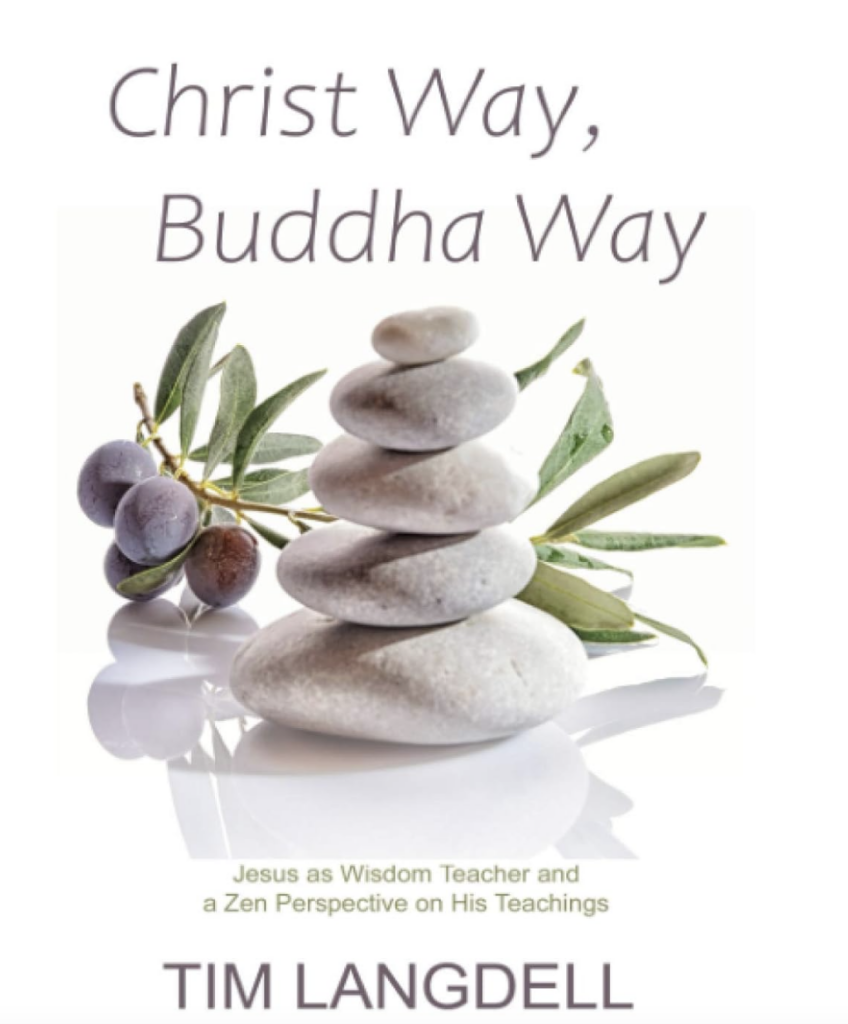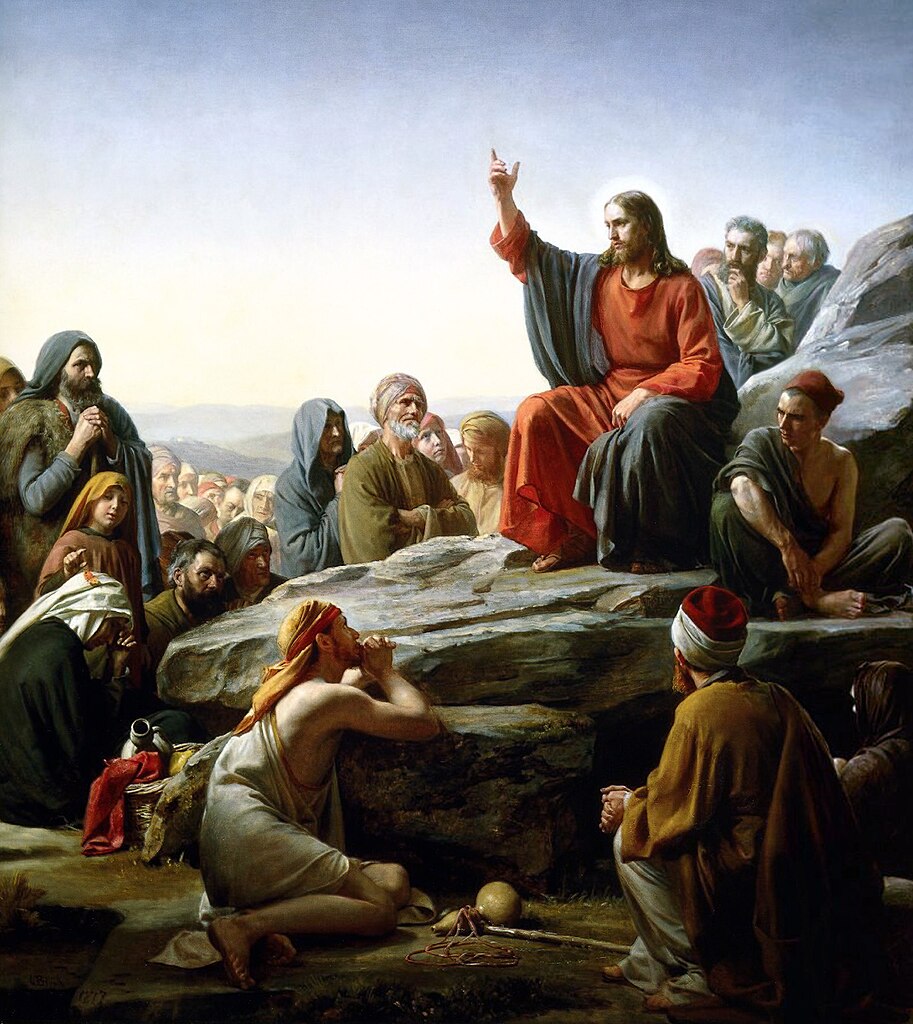“No problem can be solved from the same level of consciousness that created it.”
Albert Einstein

The single worst translation of any word in the entire Bible is the word metanoia
In Christ Way, Buddha’s Way, Tim Langdell, an ordained priest and teacher in both the Christian and Buddhist traditions, writes: “It has been said by leading scholars that quite possibly the single worst translation of any word in the entire Bible is the word metanoia. This word is used in several places in the Gospels and is most often translated as ‘repent’ or ‘repentance’. Perhaps one of the most well-known instances occurs in the book of Mark (Mk 1:15) ‘The time has come’, he said, ‘The Kingdom of God has come near. Repent and believe the good news!’ Or the version in Matthew (Mt 3:2) ‘Repent, for the Kingdom of Heaven has come near’. Others, building on the mistranslation of the word metanoia, even add words not in the original, thus: ‘Repent of your sins and turn to God, for the Kingdom of Heaven is near’ (New Living Bible). And from this simple mistranslation we get an entire theology of our needing to repent our sins so that after we die, we will go to a place called ‘Heaven’. But that is not what Jesus taught. What he taught was a way to the transformation of consciousness – a fundamental transformation of heart and mind – to a state of being he termed Heaven within, or Heaven on earth. He described this as becoming a Son (or Daughter) of God in the here and now.”
So what Jesus taught was a Way leading to a transformative experience comparable to “enlightenment” or “awakening” in Buddhism. “Meta” means “above” or “beyond,” and “noia” means mind or thought. “Literally, then, what Jesus was teaching was that in order to enter the spiritual state he called ‘Heaven’ (or, ‘Heaven within you’) you must first go beyond thinking or enter into a state of “above” (or ‘big’) mind. Or put even more simply, in order to enter Heaven – which Jesus makes clear is here and now in this moment – you must experience a spiritual awakening. Does this surprise you? Perhaps it should, since this is rarely taught in virtually any mainstream Christian churches, Protestant or Catholic, as the core of Jesus’s teaching. Yet that is precisely what it is.”
Langdell notes that “Christ’s actual teachings, then, bear a strong resemblance to those of Buddha, and specifically to Mahayana Buddhism which was just coming into being (100 BCE to 100 CE) at the exact time that Christ lived and taught. Indeed, Christ could be said to be the very epitome of a Bodhisattva – one who having achieved realization, then devotes his life to the benefit of others.” He also notes that Mahayana Buddhist monks taught in Alexandria, and Jesus may have become aware of their teachings directly or indirectly. Evidence is lacking, but Langdell’s focus is not on what Jesus’s teaching owes, or does not owe, to the Buddha’s Mahayana teachings. His focus is primarily on the disastrous consequences this mistranslation of metanoia has caused throughout the entire history of Christianity.
Langdell writes: “Associated with such mistranslation arose an entire sin-based theology which while generally absent in the synoptic Gospels (Mark, Matthew, Luke) rears its head in the much later written John and in the works of Paul. A theology that includes an emphasis on Original Sin and the idea that God sent his ‘only begotten son’, Jesus, to die for our sins (the so-called substitutionary atonement theology). For many, this idea that we are born sinners is a difficult one to accept since it does not seem to fit with the actions of a loving Creator, the God that Jesus speaks of as being Love.” On the other hand, ‘It may thus come as somewhat of a relief to learn that this theology – one so heavily based on sin and repentance in order to go to Heaven after you die – was an invention of the Early and Medieval Churches that sadly persists to the modern day’.”
Langdell then asks: “How did the early church get so far off course from Christ’s original teachings? Put simply, there is copious evidence that many of Christ’s core followers did not fully grasp what his teaching was.” In addition, the use of the word “Kingdom” in “Kingdom of Heaven” could easily be interpreted literally as the restoration of the state of Judah that was under Roman rule at the time. “Your Kingdom come” in the Lord’s Prayer led to what turned out to be fatal for Jesus. Many at the time took it to mean that he was “the Messiah that had been prophesized from time immemorial who would be a leader for the Jews and bring about a new Jewish state.” What Jesus was envisioning was “a new age for all humanity, an age that would be characterized by the emergence of a Kingdom of God, not a Kingdom of man.” Though the Lord’s Prayer appears to have been composed after Christ’s crucifixion, it most probably includes words and phrases frequently used by him.
Then, of course, while the pre-Easter Jesus was a teacher of the Way to “enter the Kingdom of Heaven” in this life, “the post-Easter Jesus, which was added to the Gospels long after they were first written, grew out [a] pedestalization of Jesus. Versions of the Gospels up to then had simply said he had died on the cross. End of story. Thus, it became necessary to introduce post crucifixion resurrection stories to once again ensure Christ is pedestalized as no mere human, and thus different from any of us.” In Paul’s Letters and the Gospel of John, Jesus was “now a teacher of original sin and repentance from sin in order to enter a remote place named Heaven after one dies.”
Langdell stresses that nothing in what he says in his book is “revolutionary or blasphemous thinking about the Gospels, or about the creeds, this is what is taught in many respectable Christian seminaries both in the US and around the world.” And he asks: “Why, then, is this at odds with what priests and other clergy teach on Sundays in Christian churches worldwide? The answer to that is a long and complex one, and ultimately doesn’t matter. What matters is that we focus as far as we are able on what Christ actually taught.”
Were you to stand next to the church front entrance just before mass, and ask people to describe the basic tennets of Christianity and what their faith means to them, you would most probably be told that “to be a Christian involved believing in doctrine that includes such fundamentals as virgin birth, original sin, repentance and the forgiveness of sins in order to go to Heaven after you die, Jesus as the only son of God, and so on.” But Langdell, following a study by Marcus Borg, explains that “much of this doctrine was invented many years after Christ’s time, or invented by Saul of Tarsus (Paul) who never met Christ and it runs contrary to Christ’s teachings … Such ideas were introduced many years after the time of Jesus and were codified in so-called ‘creeds’ such as the one arising from the Council of Nicaea (325 CE) from which we get the Nicene Creed” which was followed by six further ecumenical councils from the 4th to the 7th century CE.
Much more is said about Christ’s actual teachings in his very informative book, but Langdell has no hesitation in letting us know from the start that, “When we focus on what Christ taught, we find that his teachings have far more in common with Buddhist teachings that Christians are usually led to believe. It also becomes easier to understand why so many of Christ’s parables are also found in Buddhist texts from hundreds of years before the time of Christ, and why Buddha and Christ are unique in their similar use of such stories to convey and enhance their teachings.”
Source:
Tim Langdell – Christ Way, Buddha Way

